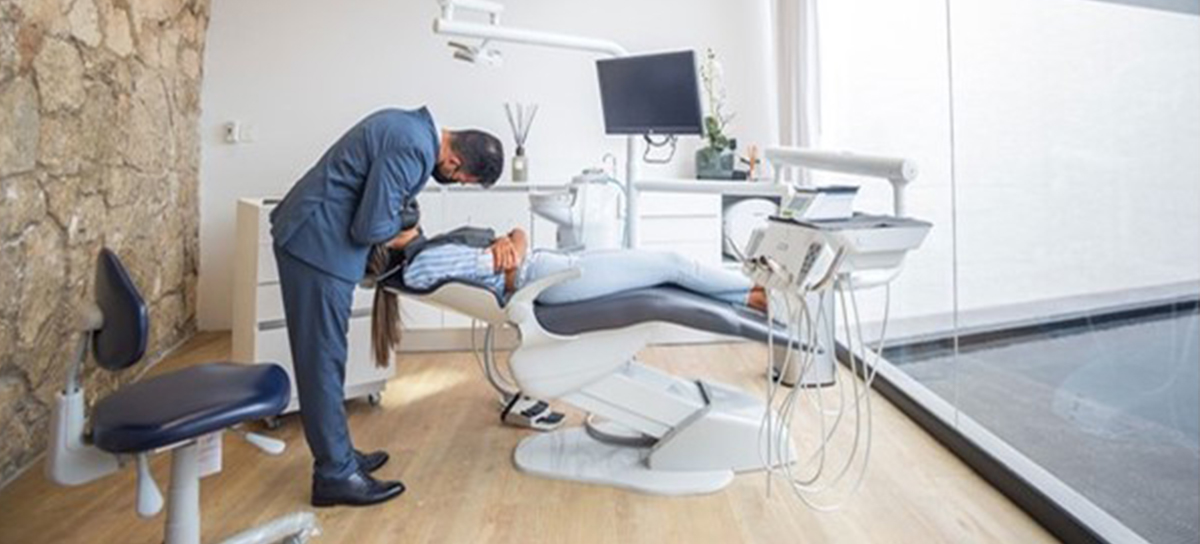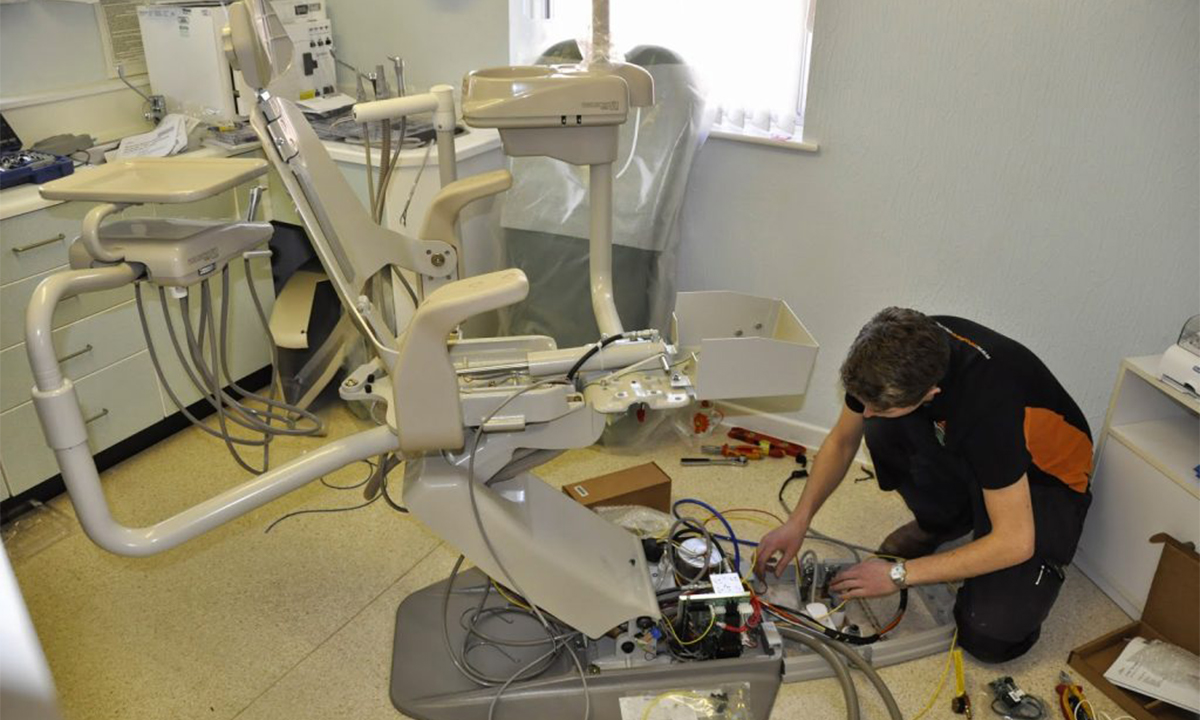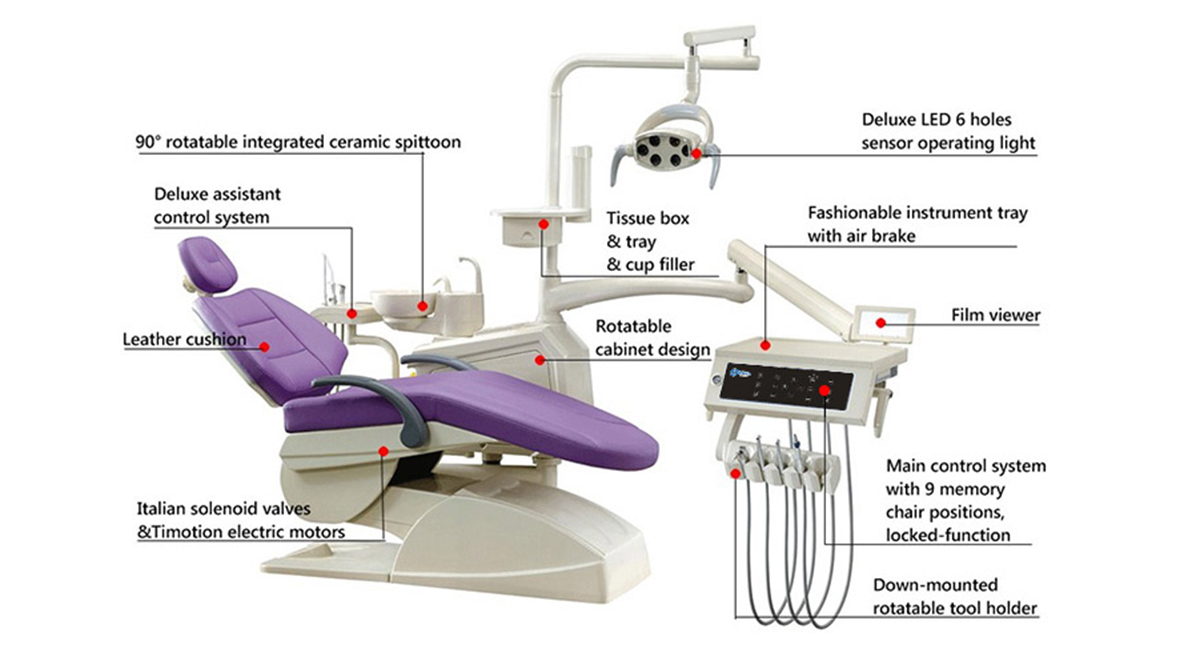How To Install The Dental Comprehensive Treatment Chair According To The Three Elements Of Water, Electricity And Gas?
The dental comprehensive treatment chair is an indispensable and important equipment in the modern dental treatment process. With the development of science and technology, dental treatment chairs have made significant progress in terms of performance and intelligence. However, the dental chair installation process is critical and directly affects the functionality, efficiency, and longevity of the equipment. This article aims to discuss the reasonable distribution and installation techniques of the three key elements of water, electricity and gas when installing a dental comprehensive treatment chair.
1. Planning and Installation of Water Lines
1.1 Layout of Water Lines
Water lines are an integral part of a dental treatment chair, providing the necessary clean water for various procedures. When planning the layout, ensure that the water pipes are well-hidden, preferably running underground, to maintain the neatness and safety of the dental office. This arrangement reduces the risk of damage and minimizes visual distractions for patients.
The choice of material for water pipes is crucial. Select materials that are resistant to corrosion and durable to ensure they do not break or leak over time. When routing water pipes, avoid unnecessary bends and joints to reduce the risk of leaks and water pressure loss.
Consider the connections with other equipment when laying out the water lines. The pipes should connect seamlessly with the dental treatment chair's internal water system. It is advisable to include access points along the water line for maintenance and inspection.
1.2 Installation of Water Filters
Clean water is vital in dental procedures for both equipment longevity and patient safety. Therefore, installing a primary water filter is essential. This filter removes impurities such as sediment, rust, and debris, preventing them from entering the internal components of the treatment chair.
The water filter should be installed in an accessible location for easy maintenance and replacement. Ideally, place the filter near the main water source, but in a way that does not interfere with other equipment operations. The size and type of the filter depend on the local water quality and the demands of the dental equipment. If the water quality is poor, consider using high-efficiency filters and changing the filter cartridges regularly.
1.3 Control of Water Pressure
Water pressure can impact the performance of the dental treatment chair. If the pressure is too high, it may cause pipe or filter ruptures, while low pressure can affect water flow, impacting equipment functionality. To ensure stable water pressure, consider installing a pressure regulator, which can maintain the pressure within a safe range.
Regularly check the water pressure to ensure it remains within 0.2 to 0.25Mpa. Any significant deviation from this range can indicate potential issues. Adjust the pressure regulator as needed to maintain consistent water pressure.
1.4 Maintenance of Water Lines
Routine maintenance of water lines is essential for the dental treatment chair's smooth operation. Before closing for the day, ensure the water source is turned off, and any residual water in the system is drained. This helps reduce pressure build-up and minimizes the risk of pipe aging and bursting.
Regularly clean the water filter to ensure unobstructed flow and proper filtration. In areas with poor water quality, change the filter cartridges more frequently to maintain the filter's effectiveness. Inspect the water pipes and connections regularly for signs of leaks or damage. If any issues are found, repair or replace the affected components promptly.
2. Installation and Maintenance of Air Lines
2.1 Choosing the Location for the Air Compressor
The air compressor is a vital component of the dental treatment chair, powering various pneumatic devices. When installing the compressor, choose a location that minimizes noise disruption to patients and dental staff. Ideally, the compressor should be placed away from the treatment chair, and if it's within the dental office, consider using noise insulation to reduce sound.
If the dental office has multiple treatment chairs, a central air supply system may be a cost-effective solution. This setup allows for a single compressor to supply air to multiple devices, reducing maintenance costs and ensuring consistent air quality and pressure.
2.2 Layout and Pressure Control of Air Lines
The layout of air lines should follow similar principles to water lines, avoiding excessive bends and joints. This ensures smooth air flow and reduces the risk of air leaks. The routing should be carefully planned, keeping the pipes hidden underground or along the walls to ensure safety.
Controlling air pressure is crucial to prevent damage to pneumatic equipment. Installing a pressure regulator in the air line is a good practice, maintaining pressure within the 0.2 to 0.25Mpa range. Regular checks on air pressure are necessary to ensure stable operation.
2.3 Routine Maintenance of Air Lines
Routine maintenance of air lines is critical for the longevity and stability of the dental treatment chair. Before closing for the day, turn off the air supply and use the three-way syringe to release any remaining air in the lines. This prevents prolonged high pressure in the system, reducing the risk of pipe aging and rupture.
Regularly empty the air filter's pressure valve to remove any accumulated moisture, which could affect pneumatic equipment's performance. Central air supply systems should be checked regularly for leaks or other issues. If any part of the air system shows signs of wear, repair or replace it promptly to avoid system-wide issues.
2.4 Maintenance of the Air Compressor
Maintaining the air compressor is vital for the entire air supply system's stability. Periodically check the compressor's working condition to ensure it operates without unusual noises or vibrations. If any problems are detected, seek professional maintenance or repair.
Ensure the air compressor has adequate ventilation to prevent overheating. Central air supply systems should be inspected regularly, checking each connection point for airtightness. Regularly inspect the compressor's power source and wiring to ensure there are no signs of damage or wear.
3. Installation and Safety of Electrical Systems
3.1 Power Capacity and Electrical Layout
Power capacity is a critical consideration when installing a dental treatment chair. These chairs typically require a significant power capacity to support various equipment. Ensure the power capacity is sufficient and allow for additional capacity for future equipment upgrades.
Electrical lines should be laid out along walls or underground to avoid exposure and minimize the risk of electric shock. When planning the electrical layout, ensure that the wires do not cross with water lines or air lines to avoid potential safety risks.
3.2 Safety Measures for Electrical Systems
Safety measures are essential for maintaining a secure electrical system. Install ground fault circuit interrupters (GFCI) to prevent electric shock. Place power outlets in convenient locations, but away from water sources or damp areas to reduce the risk of electrical hazards.
To prevent power overload, consider using voltage stabilizers to maintain stable voltage. Avoid excessive use of extension cords, and ensure the wiring is appropriately routed to prevent tangling or excessive stretching.
3.3 Routine Maintenance of Electrical Systems
Routine maintenance of electrical systems is essential for the safety and reliability of the dental treatment chair. Regularly check power outlets and wiring for signs of damage or loosening. If any issues are found, seek professional repair or replacement. Ensure power outlets are not exposed to moisture, and always maintain a dry environment around them.
Avoid frequent switching of equipment on and off, as this can reduce the lifespan of light bulbs and electrical components. Check voltage stabilizers periodically to ensure they are functioning correctly. Examine the electric components of the treatment chair to ensure smooth operation without abnormal noises or vibrations.
3.4 Maintenance and Replacement of Lighting Fixtures
Dental treatment chairs often come with surgical lights and view boxes, which require careful maintenance. Regularly inspect the light bulbs and replace any that are burned out. Avoid frequent switching of lights to prolong the bulb's lifespan.
When installing lighting fixtures, ensure they are securely mounted and do not interfere with other equipment. Surgical lights and view boxes should have power lines that are hidden to prevent accidents. Regularly check the lighting fixtures for stability and ensure the switches are functioning correctly.
4. Maintenance and Care of Patient Chairs
4.1 Transmission Systems of Patient Chairs
The transmission system of patient chairs is crucial for their proper functioning. This system can be electric or manually operated, and should be checked regularly for smooth operation. If using an electric-hydraulic system, ensure the oil tank has sufficient oil and that the oil quality is good. If not, refill or replace the oil as needed.
Mechanical transmission components require regular lubrication to ensure smooth operation. If there are any unusual sounds or issues with the transmission system, seek professional maintenance. The installation of patient chairs should ensure there is enough space for operation and patient comfort.
4.2 Belt-Driven Transmission Adjustments
Belt-driven transmission systems require careful adjustments to ensure optimal performance. Ensure the belt has the right tension—neither too tight nor too loose. A loose belt can cause operational issues, while a tight belt can damage the transmission components.
Regularly inspect the belt for signs of wear or cracking, and replace it if necessary. Also, check the surrounding components to ensure they are secure and in good condition. Proper maintenance of belt-driven transmission systems helps ensure the smooth operation of patient chairs.
4.3 Cleaning and Disinfection of Patient Chairs
Cleaning and disinfection of patient chairs are critical for maintaining a sanitary environment. Use appropriate cleaning agents that do not damage the chair's surface. Disinfect the patient chair regularly to meet the hygiene standards required for dental treatment.
When cleaning patient chairs, pay special attention to the transmission system to avoid cleaning agents seeping into the lubricated parts. For leather or synthetic materials, use gentle cleaning products to prevent discoloration or cracking. Keep the patient chair's surface clean and free from debris for patient comfort.
4.4 Daily Inspection of Transmission Components
To ensure the proper functioning of patient chairs, regular inspection of transmission components is necessary. Check for any loose or damaged parts, and address them immediately. If the patient chair uses an electric-hydraulic transmission system, ensure the electric mechanisms operate smoothly without any abnormal sounds or vibrations.
Mechanical transmission components should be lubricated regularly to maintain optimal performance. Check the lifting and lowering mechanisms of the patient chair to ensure they operate without any issues. Patient chairs are central to dental treatment, and regular maintenance helps ensure their longevity and safety.
Tel: +86 (0771) 3378958
WhatsApp: +86 19163953595
Email: sales@dynastydevice.com
Website: https://www.dynastydevice.com
Post time: May-07-2024



